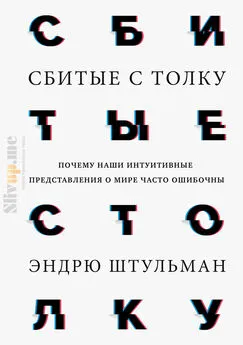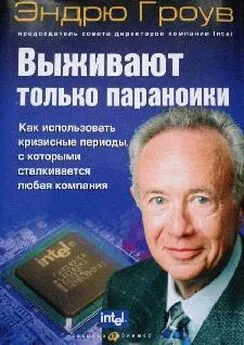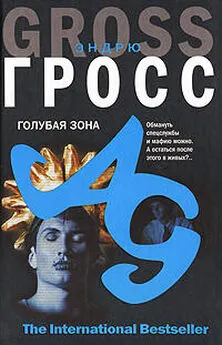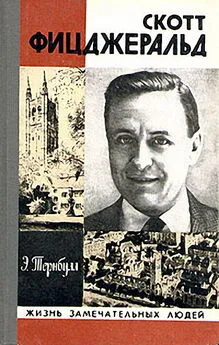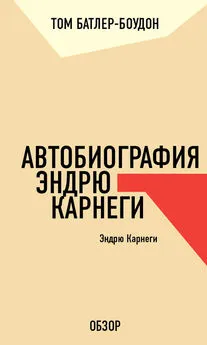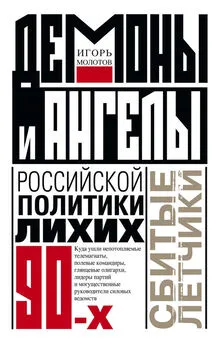Эндрю Штульман - Сбитые с толку
- Название:Сбитые с толку
- Автор:
- Жанр:
- Издательство:Манн, Иванов и Фербер
- Год:2020
- Город:Москва
- ISBN:9785001177616
- Рейтинг:
- Избранное:Добавить в избранное
-
Отзывы:
-
Ваша оценка:
Эндрю Штульман - Сбитые с толку краткое содержание
Сбитые с толку - читать онлайн бесплатно ознакомительный отрывок
Интервал:
Закладка:
Chai-Elsholz, R., Carruthers, L., and Silec, T. (2011). Palimpsests and the literary imagination of medieval England: Collected essays . London: Palgrave Macmillan.
Chamberlin, R. T. (1928). Some of the objections to Wegener’s theory. In W. A. J. M. van Waterschoot van der Gracht (ed.), The theory of continental drift: A symposium, 83–87. Tulsa, OK: American Association of Petroleum Geologists.
Champagne, A. B., Klopfer, L. E., and Anderson, J. H. (1980). Factors influencing the learning of classical mechanics. American Journal of Physics, 48, 1074–1079.
Chang, H. Y., and Linn, M. C. (2013). Scaffolding learning from molecular visualizations. Journal of Research in Science Teaching, 50, 858–886.
Chi, M. (1992). Conceptual change within and across ontological categories: Examples from learning and discovery in science. In R. Giere (ed.), Cognitive models of science, 129–186. Minneapolis: University of Minnesota Press.
Chi, M. T. H. (2005). Commonsense conceptions of emergent processes: Why some misconceptions are robust. Journal of the Learning Sciences, 14, 161–199.
Chi, M. T. H., Roscoe, R. D., Slotta, J. D., Roy, M., and Chase, C. C. (2012). Misconceived causal explanations for emergent processes. Cognitive Science, 36, 1–61.
Chi, M. T. H., Slotta, J. D., and De Leeuw, N. (1994). From things to processes: A theory of conceptual change for learning science concepts. Learning and Instruction, 4, 27–43.
Chiou, G. L., and Anderson, O. R. (2010). A study of undergraduate physics students’ understanding of heat conduction based on mental model theory and an ontology-process analysis. Science Education, 94, 825–854.
Christensen, K. D., Jayaratne, T. E., Roberts, J. S., Kardia, S. L. R., and Petty, E. M. (2010). Understandings of basic genetics in the United States: Results from a national survey of black and white men and women. Public Health Genomics, 13, 467–476.
Cialdini, R. B., and Goldstein, N. J. (2004). Social influence: Compliance and conformity. Annual Review of Psychology, 55, 591–621.
Clagett, M. (1961). The science of mechanics in the Middle Ages. Madison: University of Wisconsin Press.
Clark, D. B. (2006). Longitudinal conceptual change in students’ understanding of thermal equilibrium: An examination of the process of conceptual restructuring. Cognition and Instruction, 24, 467–563.
Clark, D. B., D’Angelo, C. M., and Schleigh, S. P (2011). Comparison of students’ knowledge structure coherence and understanding of force in the Philippines, Turkey, China, Mexico and the United States. Journal of the Learning Sciences, 20, 207–261.
Clement, J. (1982). Students’ preconceptions in introductory mechanics. American Journal of Physics, 50, 66–71.
Clement, J. (1993). Using bridging analogies and anchoring intuitions to deal with students’ preconceptions in physics. Journal of Research in Science Teaching, 30, 1241–1257.
Clement, J., Brown, D. E., and Zietsman, A. (1989). Not all preconceptions are misconceptions: finding «anchoring conceptions» for grounding instruction on students’ intuitions. International Journal of Science Education, 11, 554–565.
Clough, E. E., and Driver, R. (1985). Secondary students’ conceptions of the conduction of heat: Bringing together scientific and personal views. Physics Education, 20, 176–182.
Coley, J. D. (2012). Where the wild things are: Informal experience and ecological reasoning. Child Development, 83, 992–1006.
Coley, J. D., Medin, D., Proffitt, J., Lynch, E., and Atran, S. (1999). Inductive reasoning in folkbiological thought. In D. Medin and S. Atran (eds.), Folkbiology, 205–232. Cambridge, MA: MIT Press.
Coley, J. D., and Tanner, K. (2015). Relations between intuitive biological thinking and biological misconceptions in biology majors and nonmajors. CBE-Life Sciences Education, 14, 8, 1–19.
Corlett, E. N., and Wilson, J. R., and Corlett, N. (1995). Evaluation of human work. London: Taylor and Francis.
Cottrell, J. E., and Winer, G. A. (1994). Development in the understanding of perception: The decline of extramission perception beliefs. Developmental Psychology, 30, 218–228.
Couprie, D. L. (2011). Heaven and earth in ancient Greek cosmology . New York: Springer.
Cross, D. V., and Rotkin, L. (1975). The relation between size and apparent heaviness. Perception and Psychophysics, 18, 79–87.
Curtis, V., Aunger, R., and Rabie, T. (2004). Evidence that disgust evolved to protect from risk of disease. Proceedings of the Royal Society of London B: Biological Sciences, 271, 131–133.
Dar-Nimrod, I., Cheung, B. Y., Ruby, M. B., and Heine, S. J. (2014). Can merely learning about obesity genes affect eating behavior? Appetite, 81, 269–276.
Dar-Nimrod, I., and Heine, S. J. (2006). Exposure to scientific theories affects women’s math performance. Science, 314, 435–435.
Dar-Nimrod, I., and Heine, S. J. (2011). Genetic essentialism: On the deceptive determinism of DNA. Psychological Bulletin, 137, 800–818.
Darwin, C. (1844, January 11). Letter to Joseph Dalton Hooker. Retrieved from http://www.darwinproject.ac.uk/letter/?docId=letters/DCP-LETT-729.xml.
Darwin, C. (1859). On the origin of species by means of natural selection. London: John Murray. Издание на русском языке: Дарвин Ч. Происхождение видов путем естественного отбора. Л.: Наука, 1991.
Dawson, P., Han, I., Cox, M., Black, C., and Simmons, L. (2007). Residence time and food contact time effects on transfer of Salmonella Typhimurium from tile, wood and carpet: testing the five-second rule. Journal of Applied Microbiology, 102, 945–953.
De Waal, F. (2006). Morally evolved: Primate social instincts, human morality, and the rise and fall of «Veneer Theory». In S. Macedo and J. Ober (eds.), Primates and philosophers: How morality evolved, 1–58. Princeton, NJ: Princeton University Press.
DeJesus, J. M., Shutts, K., and Kinzler, K. D. (2015). Eww she sneezed! Contamination context affects children’s food preferences and consumption. Appetite, 87, 303–309.
Diakidoy, I. A., Vosniadou, S., and Hawks, J. D. (1997). Conceptual change in astronomy: Models of the earth and of the day/night cycle in American-Indian children. European Journal of Psychology of Education, 12, 159–184.
Diamond, A. (1985). Development of the ability to use recall to guide action, as indicated by infants’ performance on AB. Child Development, 56, 868–883.
Diamond, A., and Goldman-Rakic, P S. (1989). Comparison of human infants and rhesus monkeys on Piaget’s AB task: Evidence for dependence on dorsolateral prefrontal cortex. Experimental Brain Research, 74, 24–40.
Diesendruck, G., and Haber, L. (2009). God’s categories: The effect of religiosity on children’s teleological and essentialist beliefs about categories. Cognition, 110, 100–114.
Ding, D., Maibach, E. W., Zhao, X., Roser-Renouf, C., and Leiserowitz, A. (2011). Support for climate policy and societal action are linked to perceptions about scientific agreement. Nature Climate Change, 1, 462–466.
DiSessa, A. A. (2008). A bird’s-eye view of the «pieces» vs. «coherence» controversy (from the «pieces» side of the fence). In S. Vosniadou (ed.), International handbook of research on conceptual change, 35–60. New York: Routledge.
Dobzhansky, T. (1973). Nothing in biology makes sense except in the light of evolution. American Biology Teacher, 35, 125–129.
Dokov, W., and Dokova, K. (2011). Epidemiology and diagnostic problems of electrical injury in forensic medicine. In D. N. Vieira (ed.), Forensic medicine: From old problems to new challenges, 121–136. Rijeka, Croatia: InTech.
Donner, S. D., and McDaniels, J. (2013). The influence of national temperature fluctuations on opinions about climate change in the U.S. since 1990. Climatic Change, 118, 537–550.
Donovan, B. M. (2014). Playing with fire? The impact of the hidden curriculum in school genetics on essentialist conceptions of race. Journal of Research in Science Teaching, 51, 462–496.
Dunbar, K., Fugelsang, J., and Stein, C. (2007). Do naive theories ever go away? Using brain and behavior to understand changes in concepts. In M. Lovett and P. Shah (eds.), Thinking with data, 193–206. New York: Lawrence Erlbaum Associates.
Duncan, R. G., and Tseng, K. A. (2011). Designing project-based instruction to foster generative and mechanistic understandings in genetics. Science Education, 95, 21–56.
Eckstein, S. G., and Kozhevnikov, M. (1997). Parallelism in the development of children’s ideas and the historical development of projectile motion theories. International Journal of Science Education, 19, 1057–1073.
Elkind, D. (1961). Children’s discovery of the conservation of mass, weight, and volume: Piaget replication study II. Journal of Genetic Psychology, 98, 219–227.
Emmons, N. A., and Kelemen, D. A. (2015). Young children’s acceptance of within-species variation: Implications for essentialism and teaching evolution. Journal of Experimental Child Psychology, 139, 148–160.
Erickson, G. L. (1979). Children’s conceptions of heat and temperature. Science Education, 63, 221–230.
Evans, E. M. (2001). Cognitive and contextual factors in the emergence of diverse belief systems: creation versus evolution. Cognitive Psychology, 42, 217–266.
Evans, E. M., and Lane, J. D. (2011). Contradictory or complementary? Creationist and evolutionist explanations of the origin(s) of species. Human Development, 54, 144–159.
Evans, E. M., Spiegel, A. N., Gram, W., Frazier, B. N., Tare, M., Thompson, S., and Diamond, J. (2010). A conceptual guide to natural history museum visitors’ understanding of evolution. Journal of Research in Science Teaching, 47, 326–353.
Fallon, A. E., Rozin, P., and Pliner, P. (1984). The child’s conception of food: The development of food rejections with special reference to disgust and contamination sensitivity. Child Development, 55, 566–575.
Field, D. (1987). A review of preschool conservation training: An analysis of analyses. Developmental Review, 7, 210–251.
Fischbein, E., Stavy, R., and Ma-Naim, H. (1989). The psychological structure of naive impetus conceptions. International Journal of Science Education, 11, 71–81.
Foisy, L. M. B., Potvin, P., Riopel, M., and Masson, S. (2015). Is inhibition involved in overcoming a common physics misconception in mechanics? Trends in Neuroscience and Education, 4, 26–36.
Fox, R. (1971). The caloric theory of gases: From Lavoisier to Regnault . Oxford, UK: Clarendon.
Frappart, S., Raijmakers, M., and Frede, V. (2014). What do children know and understand about universal gravitation? Structural and developmental aspects. Journal of Experimental Child Psychology, 120, 17–38.
Freyd, J. J., and Jones, K. T. (1994). Representational momentum for a spiral path. Journal of Experimental Psychology: Learning, Memory and Cognition, 20, 968–976.
Galilei, G. (1590/1960). On motion. Madison: University of Wisconsin Press. Издание на русском языке: Галилей, Г. О движении / Г. Галилей // Избранные труды: в 2 т. М.: Наука, 1964.
Читать дальшеИнтервал:
Закладка:
